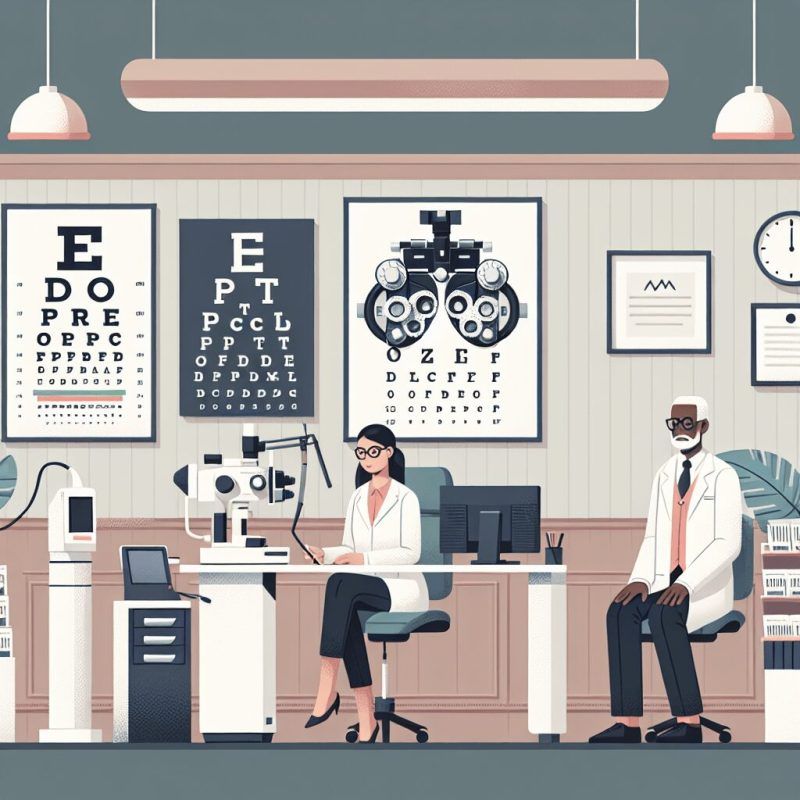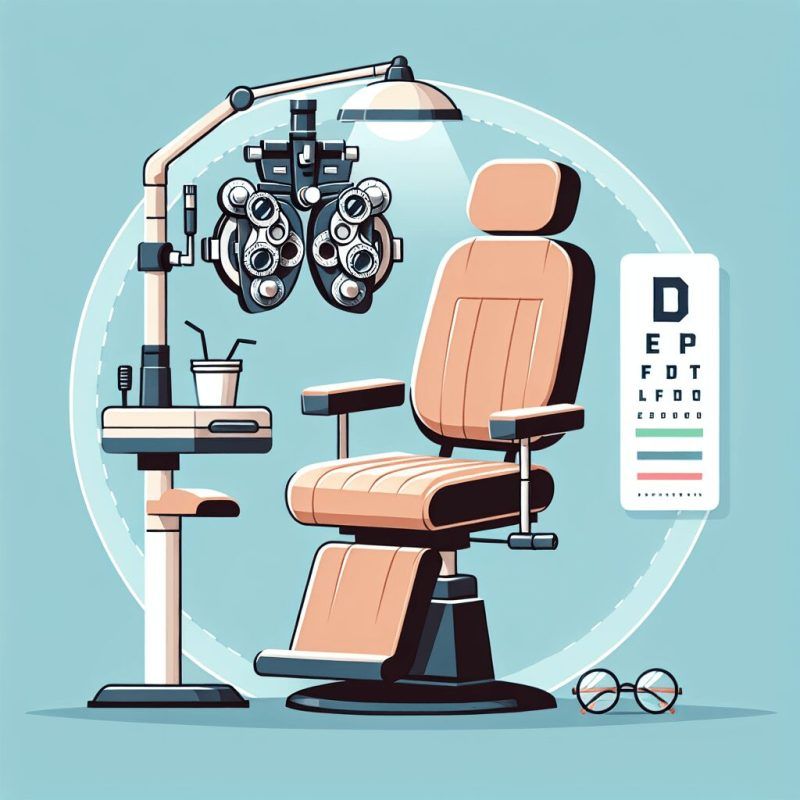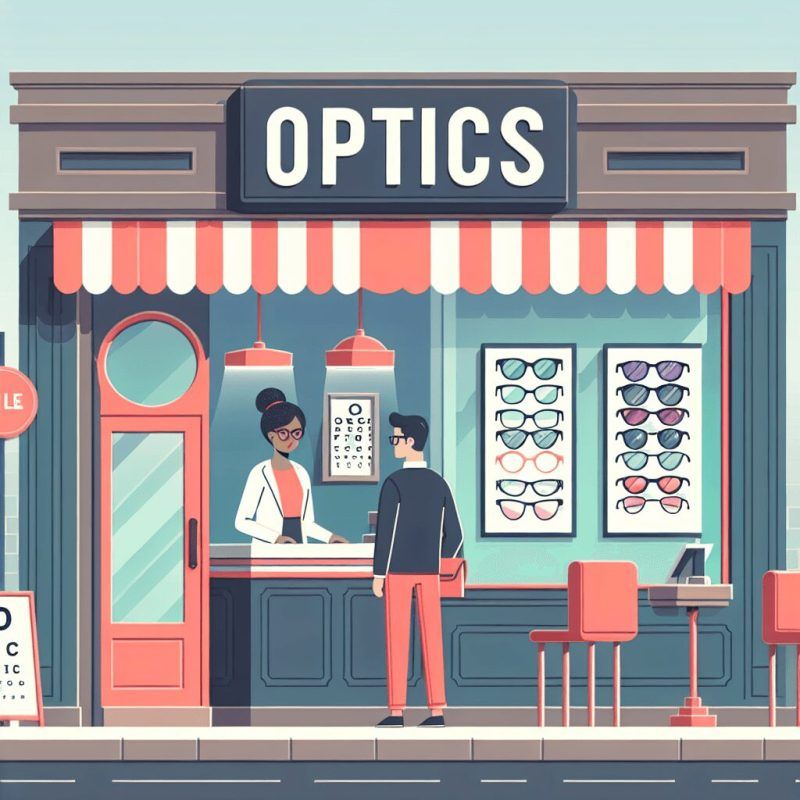Doctor's Corner
Decoding Your Eyeglass Prescription
Have you ever wondered what all those numbers and abbreviations on your eyeglass prescription mean? Understanding your prescription can help you choose the right lenses and frames for your vision needs.
Decoding your prescription, from sphere and cylinder to axis and prism, is easier than you think. In this article, we’ll break down the components of your prescription so you can confidently choose the perfect pair of glasses for your eyes.
Let’s demystify the world of eyeglass prescriptions!
Decoding Your Eyeglass Prescription
Understanding Eye Prescription Abbreviations
Decoding an eye prescription involves understanding abbreviations like OD (right eye), OS (left eye), sphere (SPH), cylinder (CYL), and axis. These indicate nearsightedness or farsightedness, astigmatism correction, and the location of astigmatism on the cornea.
Diopters represent the lens power needed for clear vision, and terms like prism correct double vision. Pupillary distance ensures proper lens positioning.
Differentiating between eyeglasses and contact lens prescriptions is important due to varying correction requirements. Eyeglass prescriptions focus on distance vision, while contact lens prescriptions consider how the lenses fit the eye.
Regular eye doctor visits are crucial as age can affect prescription changes, especially in conditions like presbyopia. Understanding these aspects helps in choosing the right eyeglasses or contact lenses for clear vision , meeting the FTC’s prescription release rule.
Deciphering Eye Prescription Numbers
Eye prescriptions have different numbers that help with vision correction. Understanding these numbers is important.
-
–Sphere measurement– : Focuses on nearsightedness or farsightedness in each eye.
-
–Cylinder– : Deals with astigmatism by detailing eye meridians.
-
–Axis number– : Shows the astigmatism location on the cornea for accurate lens correction.
-
–Prism correction– : Helps adjust double vision by indicating the base direction.
Regular eye check-ups with a doctor are necessary to monitor vision changes, especially with age.
-
For contact lenses, prescriptions may vary slightly from glasses due to their placement on the eye.
-
It’s crucial to get properly fitted for contact lenses to ensure the right correction.
Eye doctors must give a copy of the eyeglass prescription to patients as required by the FTC. This transparency empowers individuals to make informed decisions about their vision health.
Eye Prescription for Glasses vs. Contact Lenses
Different factors need to be considered when translating an eye prescription from glasses to contact lenses.
—Here are some key points to keep in mind:—
-
Glasses and contact lens prescriptions have varying measurements.
-
Eyeglass prescriptions detail values for each eye, such as Sphere, Cylinder, and Axis.
-
Contact lens prescription s might include additional parameters like base curves and lens diameter for a proper fit.
The main distinction lies in how the prescription is customized to address specific vision needs. Glasses sit away from the eye, while contact lenses touch the cornea directly. This requires adjustments in lens power and curvature to ensure accurate refractive correction.
Using an incorrect prescription can result in discomfort, blurry vision, or more serious issues like corneal injuries and infections. Therefore, it’s crucial to heed the advice of eye care professionals in selecting the right prescription based on individual eye health and requirements.
Ensuring the right eyeglass or contact lens prescription is vital for maintaining clear vision and overall eye health.
Checking Eye Prescription Expiration
Individuals can determine when their eye prescription expires by checking the date on the prescription itself. Eye prescriptions typically last one to two years, as the eye doctor recommends. Using an expired prescription can lead to vision issues due to inaccurate lens power. It’s important to schedule regular eye exams with an optometrist to check the expiration date. Age-related vision changes might require updated prescriptions.
Changes like increased myopia, presbyopia, astigmatism, or pupillary distance can affect accuracy. By following the recommended eye exam timeline and staying informed about their vision needs, individuals can ensure optimal sight health with the correct prescription.
Understanding Changes in Eye Prescriptions
Changes in an individual’s eye prescription can be influenced by various factors. These include age, refractive errors like nearsightedness or farsightedness, and the development of conditions like astigmatism or presbyopia.
Regular updates to eye prescriptions are important. It ensures accurate vision correction and is typically recommended during annual eye exams by an eye doctor.
Neglecting changes in an eye prescription can lead to problems. These include blurry vision, eye strain, and headaches due to inadequate correction.
It’s important to address changes promptly to maintain optimal sight and prevent discomfort. Understanding terms like sphere, cylinder, axis, and prism in an eye prescription can help in selecting the right eyeglass lenses or contact lenses for proper vision correction.
Following guidelines on interpreting and choosing the correct lenses based on diopters, meridians, and lens power can help individuals manage changes in their eyesight effectively over time.
FAQ
What do OD and OS mean on an eyeglass prescription?
OD stands for oculus dexter, which means right eye in Latin. OS stands for oculus sinister, which means left eye in Latin. These abbreviations indicate which eye the prescription is for on an eyeglass prescription.
What is the difference between a sphere, cylinder, and axis on an eyeglass prescription?
The sphere measures the amount of nearsightedness or farsightedness, the cylinder indicates the amount of astigmatism, and the axis defines the orientation of the astigmatism.
Why do some prescriptions have an ADD value?
Some prescriptions have an ADD value to account for additional doses needed for specific conditions, such as weight-based dosing for pediatric patients or adjustment for drug interactions.
Can I use my eyeglass prescription to buy contact lenses?
Yes, you can use your eyeglass prescription to buy contact lenses, but it may not be as accurate. It is recommended to get a separate contact lens prescription for proper fitting and vision correction.
How often should I have my eyeglass prescription updated?
It is recommended to have your eyeglass prescription updated every one to two years, or as advised by your eye care professional. Regular updates ensure your prescription is accurate and your vision is clear.
For reliable eye care in Texas visit Superior Eye Care in The Woodlands or Quality Eye Care in Willowbrook. Our team offers thorough eye exams and can help you find the best contact lenses or glasses.
The post Decoding Your Eyeglass Prescription first appeared on Optometrist in Woodlands & Willowbrook TX.
Doctor's Corner





